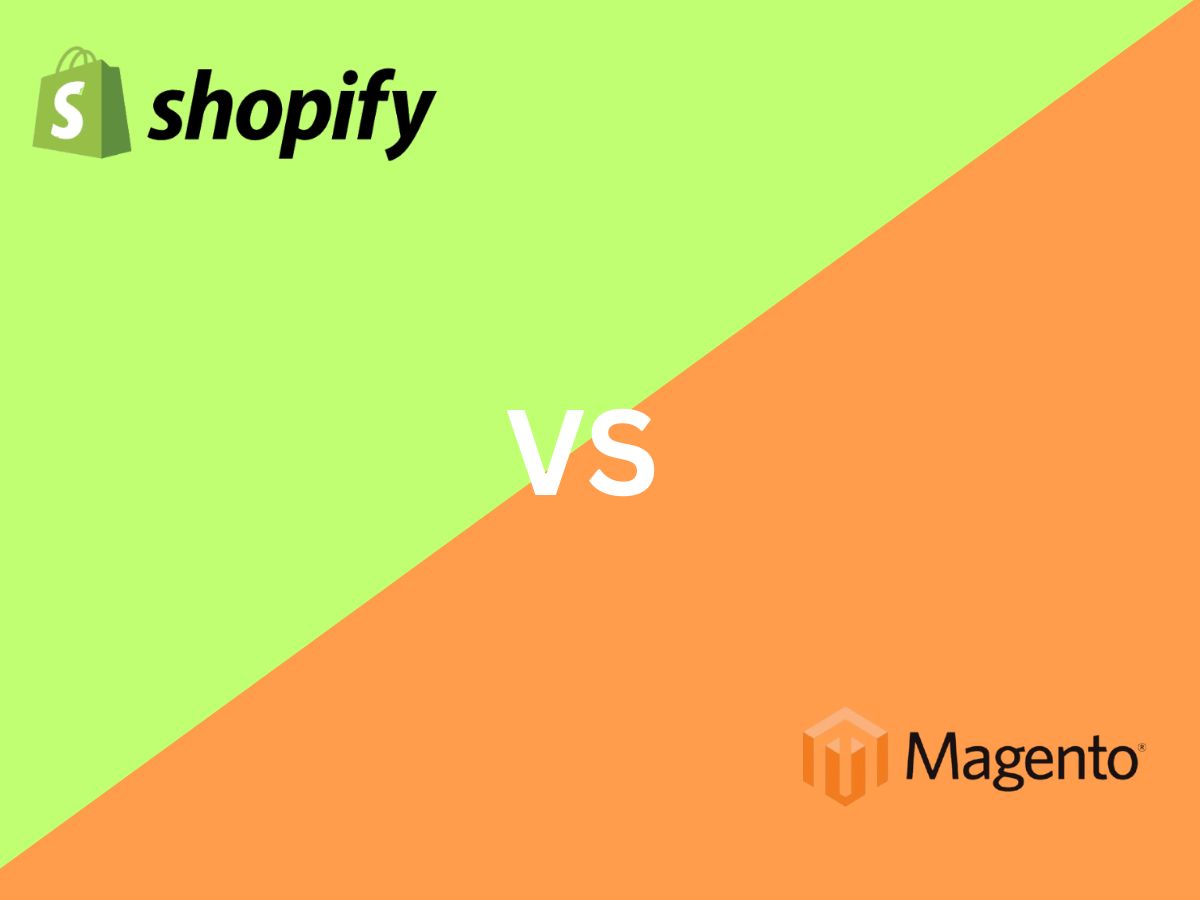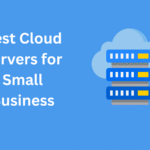Choosing an eCommerce platform usually involves two brands: Shopify vs Magento (now called Adobe Commerce). Online stores on both platforms get good support, although they are meant for different types of businesses. Knowing their good and bad points is important when deciding what to study.
Overview
Shopify is a SaaS platform that runs in the cloud and is made for people who have little experience with technical matters. Anyone starting a website can use it since it has an easy-to-use interface, making it perfect for small-business owners.
Magento is a free, open-source system that allows extensive changes to fit any e-commerce store’s needs. It is designed for companies with particular needs and enough resources to handle a complex system.
In summary, the main difference between Shopify and Magento is that Shopify is designed for individuals and small companies, while Magento serves larger enterprise businesses.
Quick Verdict: Shopify vs Magento
Those looking for a convenient and complete eCommerce system should go for Shopify. It’s easy to get going on and does not need coding; plus, the plan comes with hosting, secure access, and help for small to medium companies. Since Magento (Adobe Commerce) provides strong customization, the ability to scale up, and control over everything, it fits the needs of big companies with advanced technical requirements. Shopify’s simplicity and ease of use make it stand out, whereas Magento stands out for its flexibility and complex features. Starting up rapidly and with little effort should be done with Shopify. If you want to use a customized platform and your team can build it, Magento is the one to choose.
Shopify vs Magento: Pros and Cons
Shopify Pros and Cons
Pros
- Using this software is easy since no coding is necessary.
- Hosting, plus security and updates, are all taken care of in one package.
- Begin your store fast because the main details are already set up.
- Support is offered through chat, phone, and email 24 hours a day.
- There is a huge variety of apps and connections among products in the App Ecosystem.
Cons
- Lack of Flexibility – You are mostly limited when making changes to the back-end.
- Monthly Fees – Subscription and apps can become costly when payment is made on a monthly or annual basis.
- Shopify Payments Users – You will have to pay additional fees if you do not opt for Shopify Payments.
Magento Pros and Cons
Pros
- You can shape the site however you like – both in style and in functionality.
- Manages the needs of big, busy stores effectively.
- Popular Features – Magento supports several stores, gives you options for your products, and integrates deeply with many services.
- Lots of people are using this technology, making it easy to find help online.
Cons
- You Will Need Technical Skills to Use It – You will need to acquire technical information or hire a developer to use it properly.
- Self-Managed Hosting- If you self-manage hosting, you should prepare and operate it using Magento Open Source.
- More costs – The process of developing and running a website can be quite expensive.
- Maintenance Responsibilities – your task is to take care of software updates and equipment maintenance.
Pricing and Plans
Shopify Pricing & Plans
- Basic Plan – $39/month
- For those who are just starting their business, this is the best choice.
- You can use the tool for your online store, blog, and setting up sales channels.
- You are allowed to have only up to 2 staff accounts.
- Basic reports
- Shopify Payments has standard rates for processing transactions.
- Shopify Plan – $105/month
- This method is meant for growing companies.
- Social networks may have up to 5 staff accounts.
- Professional reports
- Due to the shipping discounts and features for selling in other countries, Amazon is gaining popularity.
- Advanced Plan – $399/month
- Best used by companies that want to grow and are not limited to a single structure
- A maximum of 15 people at a company can use staff accounts.
- Advanced report builder
- Rates that are determined by outside organizations
Shopify Plus – Starts at ~$2,000/month
- High-end technology and assistance for businesses
- Customizable checkout
- A single lead manager is assigned to you, and we provide strong integrations.
- Ability to sell in several stores and around the world
Magento Pricing
- Magento Open Source is available to use at no cost.
- The program can be downloaded and used without a fee.
- Distinguished by having costs that are separate from one another.
- The cost starts from $22,000/year, but it may reach over $100,000 for bigger businesses.
Key Takeaways
- Shopify has monthly fees that are easy to predict, plus you get both hosting and support included.
- Though Magento Open Source is free, you have to pay for the essential services and development required.
- Although Magento Commerce provides a lot of benefits, it costs a lot more than Shopify.
Ease of Use
Thanks to its simple features, many beginners and small business owners pick Shopify to start their online stores. Due to its user-friendly interface, anyone can set up and handle their store without needing to code. It’s simple to add products, process orders, and add apps, since everything is made that way. Shopify looks after hosting, the security of stores, and updates, so users do not have to worry about them.
However, there is a lot more to learn when using Magento (Adobe Commerce). Since it is very technical, developers and power users can use it to manage their stores in any way they need. Besides being comfortable with PHP, you have to know about setting up hosting and running the server to install and customize features in Magento. Even though the platform can be adjusted to suit many needs and grow with organizations, it is not easy to use for those unfamiliar with technical matters.
People who need a store set up fast and without stress should go with Shopify. Yet, Magento is a good fit for companies that are ready to spend on a high-quality and custom software system. All in all, Shopify stands out because it’s straightforward and fast for customers who appreciate speed and simplicity over having many advanced features.
Themes and Templates
Shopify’s themes and templates are available to all users and are known for their good design. You have access to lots of high-quality, mobile-friendly themes, some at no cost, from its very own Theme Store. With Shopify, people can adjust the appearance of these themes through the easy-to-use editor and avoid working with code. Since these themes are made for speed, search engines, and user friendliness, they help businesses get a high-quality storefront without having to work with a designer.
About this area, Magento is more advanced and less friendly for new users. When you begin, you are given fewer pre-built themes, and making changes usually requires knowledge of HTML, CSS, and PHP. ThemeForest is one of the many third-party sites for purchasing Magento themes, but to use these themes and change them, developers are usually required.
In short, Shopify is preferred for those who want to start quickly with attractive templates, whereas Magento is for businesses that can design their websites and have advanced knowledge.
Marketing and SEO
Both Shopify and Magento allow great marketing and optimization possibilities, but they are meant for distinct groups of customers.
Shopify comes with simple tools that are easy to learn, even for new users. It permits edits to meta titles, descriptions, and the alt text for any images you insert into your website. Using Shopify, a sitemap is prepared automatically, and basic ways of organizing URLs are dealt with as well. It is easy to integrate marketing services through apps for email newsletters, social media shops, and Google Ads. Because Shopify includes discount codes, gift cards, and abandoned cart recovery, it is perfect for running quick and effective marketing campaigns.
Unlike Kart, Magento requires a lot more effort to learn how to use SEO and marketing features well. You can handle every aspect of your URLs, descriptive data, markup, redirects, and files used by search robots. Magento has promotional features, can segment customers, and offers rule-based product suggestions, mainly in Adobe Commerce. Still, most of these features can only be activated by setting them up or adding extra extensions.
To sum up, Shopify is especially useful for those who need hassle-free marketing features and top-notch SEO right away. Businesses that wish to personalize their site greatly and employ advanced SEO features with the help of technical experts can use Magento well.
Transaction Fees
Shopify works with a variety of payment gateways, like Shopify Payments, PayPal, Stripe, and others. If you use Shopify Payments, you won’t have to pay transaction fees, but if you select a third-party gateway, Shopify will add extra charges of 0.5% to 2%. It can cause higher costs, mostly for places with a high number of customers. This platform offers a wide range of supported currencies and provides a convenient checkout process.
Because Magento is open-source, sellers do not have to pay transaction fees and still have many payment options to choose from. Any payment gateway provided by PayPal, Authorize.Net, Stripe, or local companies can be connected directly to a merchant’s store. But, most of the time, these integrations need expertise in programming or support from a developer. You can use and shape Magento’s payment methods to suit your business and adjust the checkout page for use with many currencies.
Shopify does payment well for those with an online store, although there may be costs, and Magento lets you handle everything, but there are no extra fees for online payments.
Reports and Analytics
Reports on sales, how customers behave, and how marketing works can be prepared with Shopify’s reporting features. The dashboards are provided for every plan, but you need to pay more to see advanced reports that are present only in the higher-tiered plans and Shopify Plus. To get more data, Shopify can be connected with Google Analytics and various third-party apps.
Magento (Adobe Commerce) gives users access to more detailed and adjustable reporting in its enterprise edition. With detailed sales reports, dividing customers, and checking product performance, it is perfect for large companies that like detailed data. On the other hand, the advanced reporting in Magento usually requires users to have knowledge and perform the setup.
Essentially, Shopify provides simple reports that are straightforward to use, and Magento helps users with advanced, adjustable analytics, usually preferred by businesses.
Help and Support
Shopify is especially praised for its powerful and easy-to-use support services. You can call, chat online, or write an email to get 24/7 customer support on all available plans. Another advantage is that Shopify offers many self-help materials, such as guides, tutorials, and a help community forum. Therefore, users of all skill levels can sort out their problems easily on Shopify.
Magento (Adobe Commerce) mainly counts on its user base and additional support packages. Data Science is easier to use with the licensed version because open-source assistance comes from technical people rather than official support. Those who choose Magento Commerce can get account managers, urgent support, and custom help, but it will be more costly. Most of the time, anyone looking into a bug will need developers to help.
In brief, Shopify has support services that are helpful for both beginner and advanced users, day and night, but Magento’s support mainly targets developers and large companies that can pay for it.
How To Choose
Any business owner or entrepreneur who wants to open an online shop and doesn’t want to worry about tech skills should consider Shopify. It’s the right choice for people in search of a complete package that has hosting, security, and support included. If a business needs quick results, easy navigation, and a variety of ready apps, it can opt for Shopify. MultiSafepay fits well with startups, those doing dropshipping, and retail companies aiming to grow and sell in numerous channels at once.
Adobe Commerce (Magento) works best for companies that have intricate needs and plenty of technical experts. It is a good option for companies that need to customize a lot, handle several businesses from one place, and link with other important tools such as ERP or CRM. Many companies with big product offerings, B2B activities, or who work globally prefer Magento. Companies choosing this option must be ready to handle all parts of the business and can afford to develop and maintain the store.
Your business’s size, how much you can spend, and your technical skills will help you pick.
Final Verdict: Shopify vs Magento
Shopify is one of the easiest-to-use options that provides all the necessary services in one platform. Small to medium-sized stores can benefit from it, since it is easy to set up and manage. A large business that wants lots of flexibility, room to grow, and customization usually relies on Magento. Since Magento takes more effort and investments, it is well-suited for major online projects that process a high number of orders. Shopify is known for being simple and quick, while Magento is the top choice for those seeking huge amounts of control and customization.










